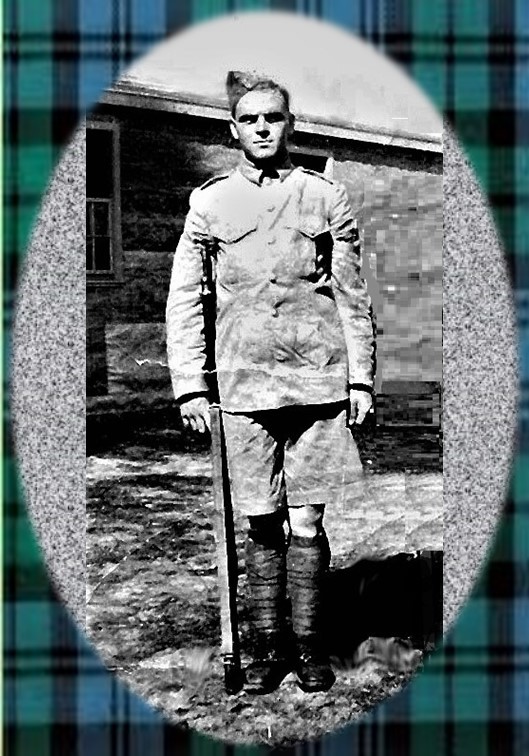 --June 15, 2020.
--June 15, 2020.
Billy Rainey (1918-1981), from Rawcliffe, Quebec, and his older brother Buster (1917-1983), enlisted with the Canadian Forestry Corps, in Westmount, Quebec, on July 29, 1940, for military duty in WWII. After six months training at Camp Valcartier, QC, they shipped out to Britain. They served initially cutting timber in Scotland, but Billy later transferred and trained with several combat units in England, before being assigned to the 1st Battalion Black Watch of the Canadian Highland Regiment, towards the end of WWII.
Buster remained with the Canadian Forestry Corps, throughout, but after D-Day, (June 6, 1944), his CFC Coy 16 was transferred, from Scotland to the continent, to cut timber, initially at Cerisy-la-Foret in Normandy, France and later in the Ardennes Forest near Spa Belgium.
Billy Rainey was initially with Buster, in Coy 2 Canadian Forestry Corps, in Balogie, Scotland (Jan 1941 - Apr 1943). Billy’s intensive combat training was with: Coy 3 Canadian Armoured Reinforcement Unit (Apr 1943 - Aug 1943), the Canadian School of Artillery (Aug 1943 - Nov 1944), Coy 2 Canadian Armoured Reinforcement Unit (Nov 1944), and Coy 3 Canadian Infantry Corps (Nov 1944-Mar 1945).
He was assigned to the 1st Battalion Black Watch, (Mar 1945-Jun 1945), to reinforce that casualty- drained unit, for ongoing combat in Holland and Germany. Billy disembarked in Holland on Mar 28, 1945, joining the Black Watch at Holten, in north-east Holland.
The Black Watch had first seen WWII action at Dieppe in Aug ust 1942, where Coy C, (with its mortar platoon), was a key element in what turned out to be a disastrous reconnaissance raid.
Subsequently, landing in Normandy shortly after D-Day, the Black Watch participated in some thirty battle actions throughout France, Belgium, Holland, and Germany. Members of the battalion won 211 honours for the campaign, but also sustained the heaviest casualties of any Canadian battalion.
The 1st Battalion Black Watch consisted of 5 companies, (Coys A, B, C, D & Spc.). Billy joined Coy D, which had been twice decimated, in separate earlier battles in France and Belgium.
In Jul 1944, the Black Watch took heavy losses at the Battle of Verrières Ridge, (part of the allied campaign to take Caen), in northern France. Then, on what became known as Black Friday, (October 13, 1944), during the Battle of the Scheldt, fought to open the Scheldt Estuary between Belgium and Holland, for allied shipping access to the key port of Antwerp, Belgium), the Black Watch was almost wiped out. But after each successive setback, the Black Watch Battalion rebuilt with new infantry recruits. Their final WWII push was through north-east Holland into Germany.
The end of WWII in Europe was at hand. Hitler had committed suicide in his Berlin bunker on Apr 30, 1945. On Sat., May 5, Billy Rainey and the Black Watch were at Oldenburg in north-western Germany, when at 08:00 hrs a “cease fire” was declared in that district. For liberated Russian and Polish prisoners at Oldenburg, it was a day of jubilation - the vodka flowing freely. For the Black Watch it was "just another day", albeit a day of rest! At 23:00 hrs the directive came that they would be mobilizing to take up occupational duties in Northern Germany.
On May 8, 1945, at Reims, France, German General Alfred Jodl signed the unconditional surrender of all German forces in Europe, East and West.
